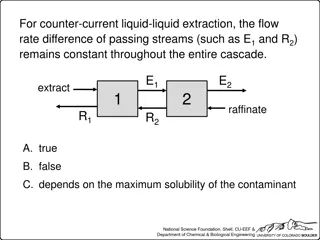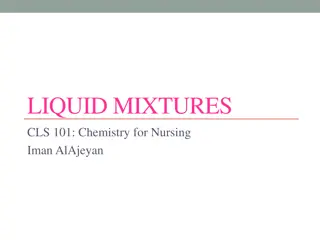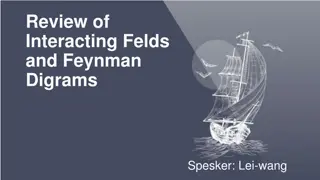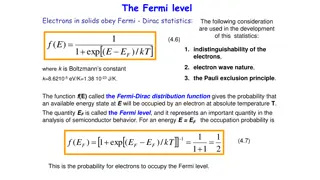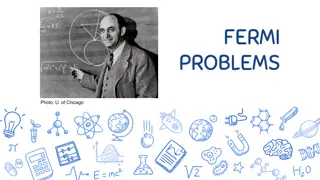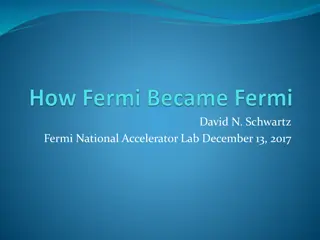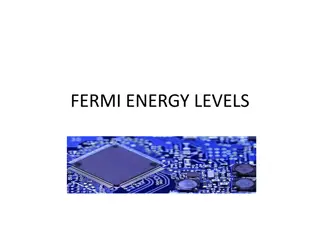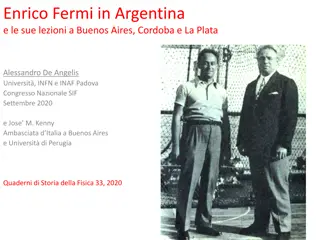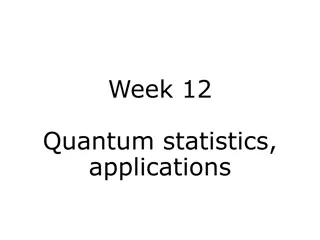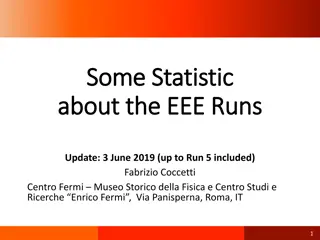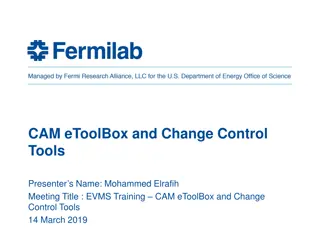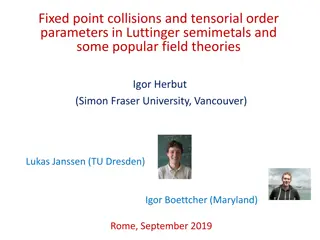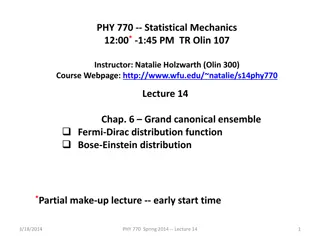Understanding Fermi Liquid Theory in Interacting Fermion Systems
Fermi liquid theory, also known as Landau-Fermi liquid theory, is a theoretical model that describes the normal state of metals at low temperatures. Introduced by Landau and further developed by Abrikosov and Khalatnikov, this theory explains the similarities and differences between interacting fermion systems and non-interacting Fermi gases. By considering adiabaticity and the exclusion principle, it shows how the ground state of a Fermi gas transforms when interactions are slowly introduced. The theory highlights the one-to-one correspondence between elementary excitations of Fermi gas and Fermi liquid systems, with quasi-particles representing these excitations.
Download Presentation

Please find below an Image/Link to download the presentation.
The content on the website is provided AS IS for your information and personal use only. It may not be sold, licensed, or shared on other websites without obtaining consent from the author. Download presentation by click this link. If you encounter any issues during the download, it is possible that the publisher has removed the file from their server.
E N D
Presentation Transcript
Electrons-electrons interaction Fermi liquid theory (also known as Landau Fermi liquid theory) is a theoretical model of interacting fermions that describes the normal state of most metals at sufficiently low temperatures. The phenomenological theory of Fermi liquids was introduced by the Soviet physicist Lev Davidovich Landau developed by Alexei Abrikosov and I. M. Khalatnikov using diagrammatic perturbation theory. in 1956, and later
Electrons-electrons interaction The theory explains why some of the properties of an interacting fermion system are very similar to those of the Fermi gas (i.e. non-interacting fermions), and why other properties differ. Important examples of where Fermi liquid theory has been successfully applied are most notably electrons in most metals and Liquid He-3.[3]
Electrons-electrons interaction Liquid He-3 is a Fermi liquid at low temperatures (but not low enough to be in its superfluid phase.) He-3 is an isotopeof Helium, with 2 protons, 1 neutron and 2 electrons per atom. Because there is an odd number of fermions inside the atom, the atom itself is also a fermion. The electrons in superconducting) metal also form a Fermi liquid, as do the nucleons(protons and neutrons) in an atomic nucleus. Strontium ruthenate displays some key properties of Fermi liquids, despite being a strongly correlated material, and is compared with high temperature superconductors like cuprates.[ a normal (non-
Electrons-electrons interaction The key ideas behind Landau's theory are the notion of adiabaticity and the exclusion principle. Consider a non-interacting fermion system (a Fermi gas), and suppose we "turn on" the interaction slowly. Landau argued that in this situation, the ground state of the Fermi gas would adiabatically transform into the ground state of the interacting system.
Electrons-electrons interaction By Pauli's exclusion principle, the ground state of a Fermi gas consists of fermions occupying all momentum states momentum K KFwith all higher momentum states unoccupied. As interaction is turned on, the spin, charge and momentum of the fermions corresponding to the occupied states remain unchanged, while their dynamical properties, such as their mass, magnetic moment etc. are renormalized to new values. Thus, there is a one-to-one between the elementary excitations of a Fermi gas system and a Fermi liquid system. In the context of Fermi liquids, these excitations are called "quasi- particles". corresponding to correspondence
Electrons-electrons interaction Physically, we can say that a propagating fermion interacts with its surrounding in such a way that the net effect of the interactions is to make the fermion behave as a "dressed" fermion, altering its effective mass and other dynamical properties. These "dressed" fermions are what we think of as "quasiparticles". Another important property of Fermi liquids is related to the scattering cross section for electrons.
Electron Electron Collision Electron-Electron astonishing conduction electrons, although crowded together only 2 A apart, travel long distances between collisions with each other. The mean free paths for electron-electron collisions are longer than l04A at room temperature and longer than 10 cm at 1 K. Collisions. It is an property of metals that
Electron Electron Collision Two factors are responsible for these long mean free paths, without which the free- electron model of metals would have little value. The most powerful factor is the exclusion principle and the second factor is the screening of the coulomb interaction between two electrons.
Exclusion principle reduces the collision We show how the exclusion principle reduces the collision frequency of an electron that has a low excitation energy E, outside a filled Fermi sphere (Fig. 18). We estimate the effect of the exclusion principle on the two-body collision 1 + 2 3 + 4 between an electron in the excited orbital 1 and an electron in the filled orbital 2 in the Fermi sea. It is convenient to refer all energies to the Fermi level EF taken as the zero of energy; thus E1, will be positive and E2 will be negative.
Because of the exclusion principle the orbitals 3 and 4 of the electrons after collision must lie outside the Fermi sphere, all orbitals within the sphere being already occupied; thus both energies E3,, E4, must be positive referred to zero on the Fermi sphere. The conservation of energy requires that lE2l < E1, otherwise E3+ E4 = E1+ E2 could not be positive.
This means that collisions are possible only if the orbital 2 lies within a shell of thickness E1 within the Fermi surface, as in Fig. Thus the fraction =E1/EF of the electrons in filled orbitals provides a suitable target for electron 1
But even if the target electron 2 is in the suitable energy shell, only a small fraction of the final orbitals compatible with conservation of energy and momentum are allowed by the exclusion principle. This gives a second factor of E1,/EF.
In Fig. we show a small sphere on which all pairs of orbitals 3, 4 at opposite ends of a diameter satisfy the conservation laws, but collisions can occur only if both orbitals 3, 4 lie outside the Fermi sea. The product or the two fractions is ( E1/EF )2. If El corresponds to 1 K and EFto 5 X l04 K, wc have ( E1/EF)2 ~ 4 X 10-10, the factor by which the exclusion principle reduces the collision rate.
The argument is not changed for a thermal distribution of electrons at a low temperature such that kBT EF . We replace E1by the thermal energy = kBT, and now the rate at which electron-electron collisions take place is reduced below the classical value by (kBT/EF)2, So that the effective collision cross section is = (kBT/EF)2 0 where 0is the cross section for the electron- electron interaction.
A more subtle effect of the electron-phonon interaction is the apparent increase in electron mass that occurs because the electron drags the heavy ion cores along with it. In an insulator the combination of the electron and its strain field is known as a polaron, Fig. 19. The effect is large in ionic crystals because of the strong coulomb interaction between ions and electrons. covalent crystals the effect is weak because neutral atoms have only a weak interaction with electrons.







